We don’t think there has been a test bike that we’ve had that has drawn more comments on its aesthetics than the Canyon Inflite CF. Being generous, it is distinctive. Many of our readers were less than generous, though it also drew a lot of praise. You can’t tell what a bike looks like when it is under you, or slung across your shoulder, though and the Inflite was designed from a pure performance perspective. So let’s concentrate on that. How did it get on from race course to local trails?
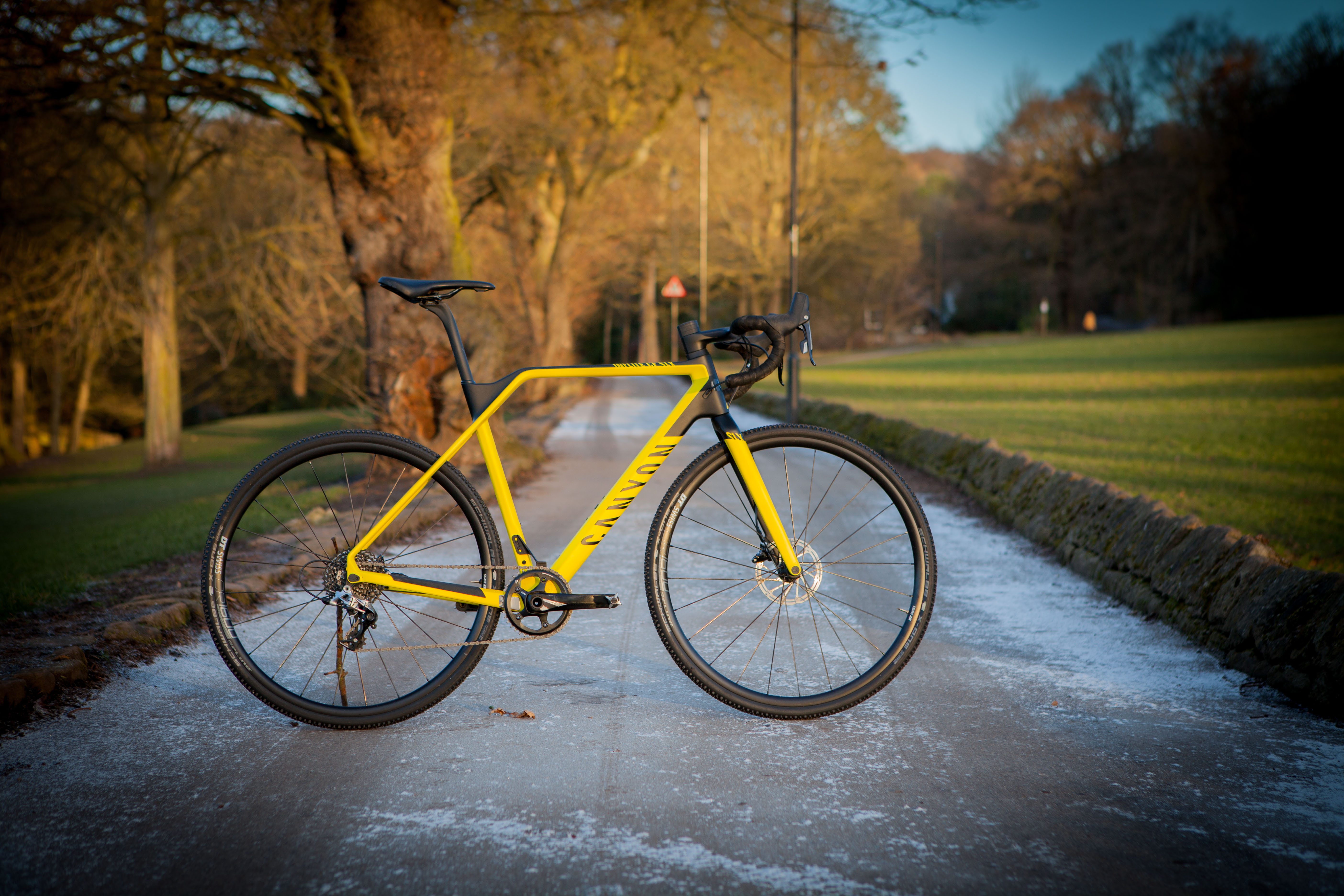
Brand: Canyon
Model: Inflite CF SLX 8.0 Pro Race
From: Canyon
Price: £2,499
Tested By: Tom
Test Duration: 3 months
The Frameset
As I pointed out in my first look, Canyon has perhaps had a gap in their line up until now – a true race focussed ‘cross bike. It took the opportunity to design the Inflite CF SLX frame from the ground up. This is far from a cookie-cutter approach to race bikes – from geometry to comfort and ease of carrying, the Canyon designers have clearly spent a lot of time thinking about what makes a great race bike.
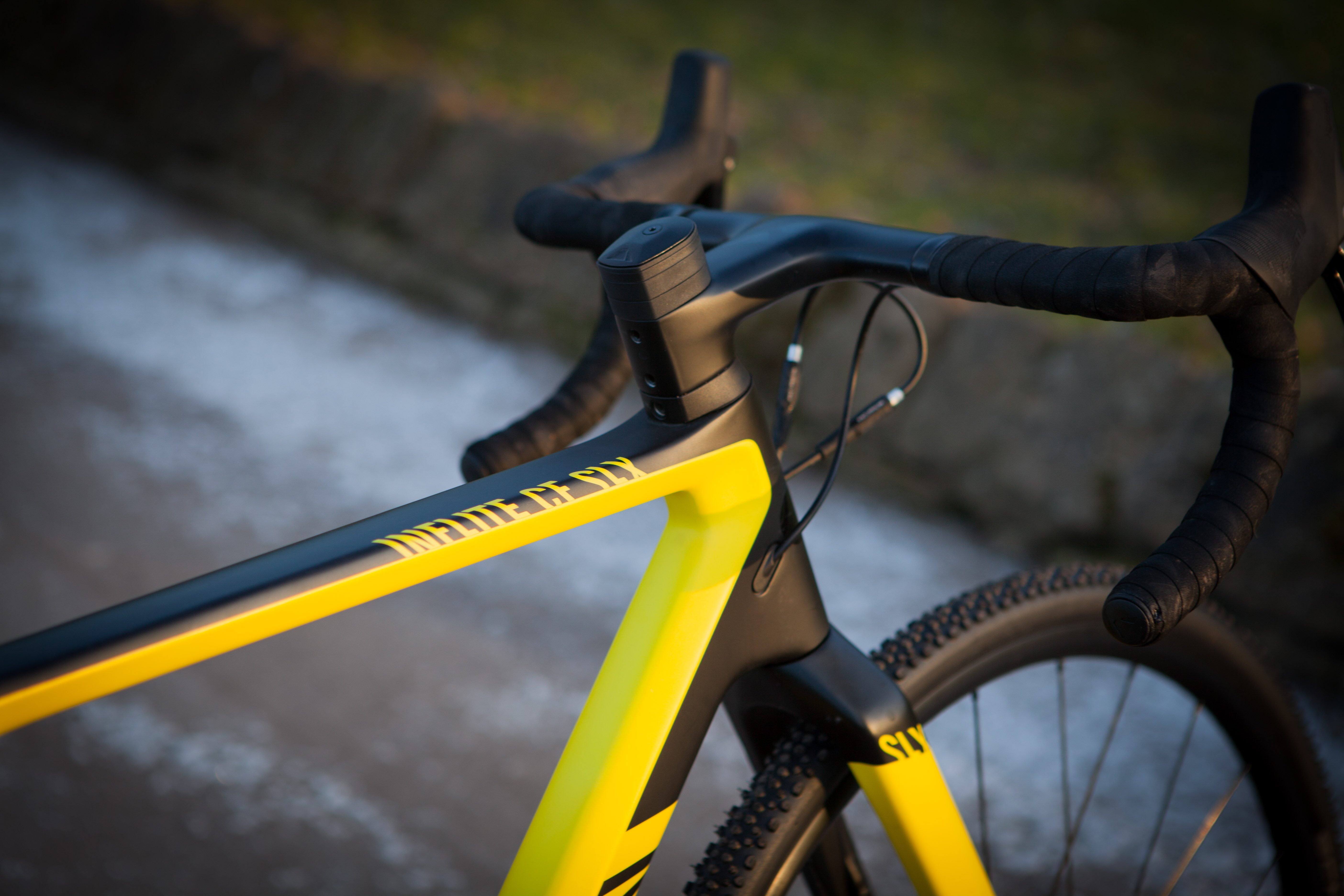
Taking its cues from elsewhere in its off-road range, Canyon has made a couple of steps away from traditional ‘cross geometry, most notably lengthening the top-tube for a given size, and shortening the stem slightly. Our medium bike came with a 100mm equivalent stem on its integrated “cockpit” (more than that later though).
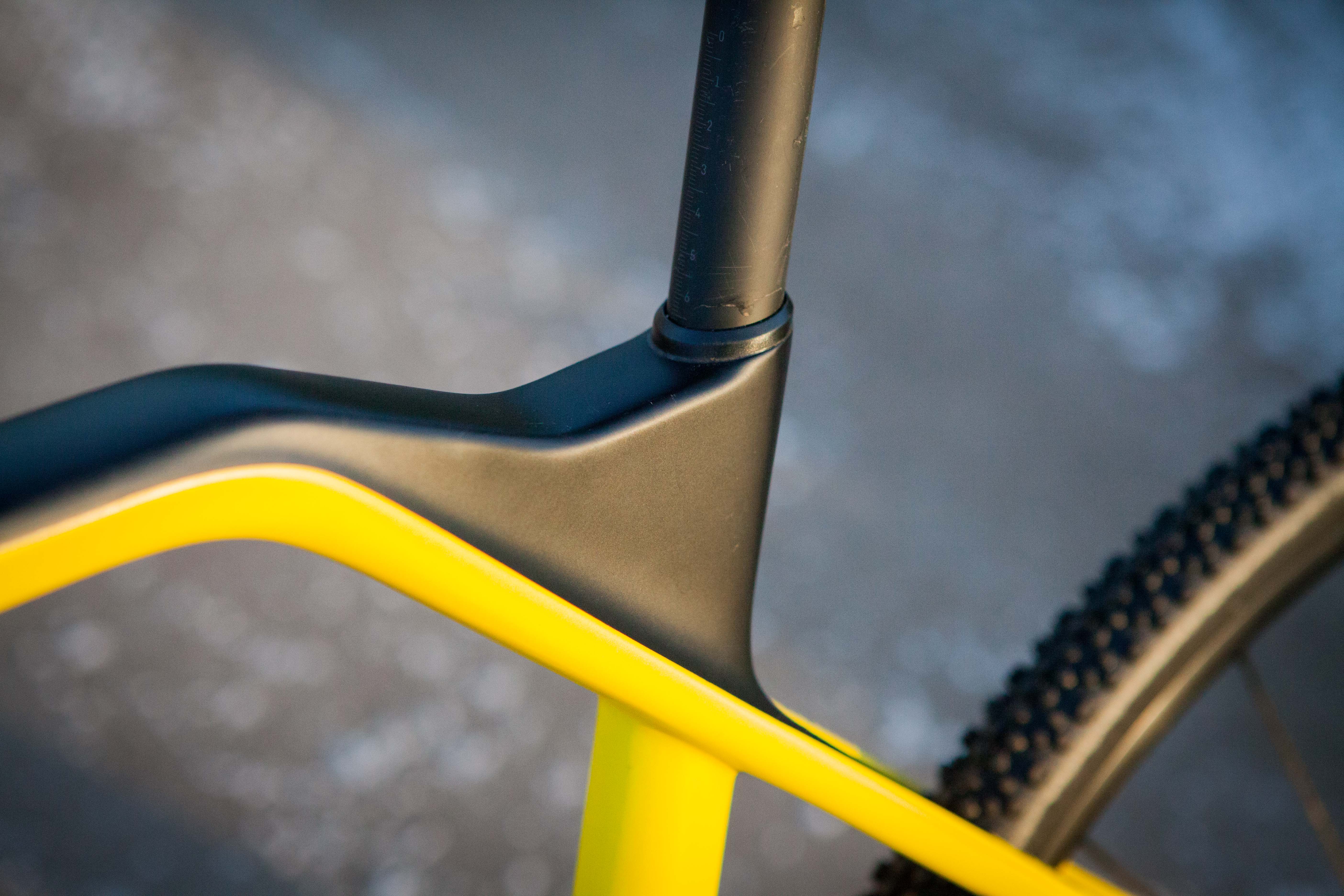
There’s no getting around the fact that there’s a hell of a lot of other stuff going on with that frame beyond a slightly longer top-tube. Where to start? Lets go with the obvious; the kinked top tube has two purposes. Firstly, it creates a larger main “triangle” for easier shouldering, as well as a more comfortable shouldering platform. The kink also acts as a handle when just carrying the bike. Secondly, the lower top tube/seat tube intersection means a longer exposed seatpost, allowing for more flex (and therefore comfort) through the post. This is further enhanced by a low integrated seat clamp, accessed via a bolt on the underside of the kinked section of top-tube. This came covered with a small rubber grommet, which promptly fell out during my first race – presumably while shouldering the bike. A spare is included, but given how quickly no. 1 ejected itself, I’d be tempted to just use a little bit of electrical tape to cover the hole.

The Inflite’s seat stays meet the seat tube lowdown too, creating a tight rear triangle, stiffening things up where they matter. They are flattened, theoretically creating some vertical flex, but resisting twisting forces. It is one of the overlooked benefits of disc brakes that the removal of cantis from the stays means that they don’t have to deal with a tonne of braking forces half way up the tube. Canyon have taken advantage of this and ditched the seat stay bridge, opening up clearance.

A chunky BB and chain stay cluster should be stiff enough to ensure no watts are wasted in transferring power from leg to wheel. They are also smoothly shaped and comfortably clear the spec’d 33c Schwalbe X-One tyres.
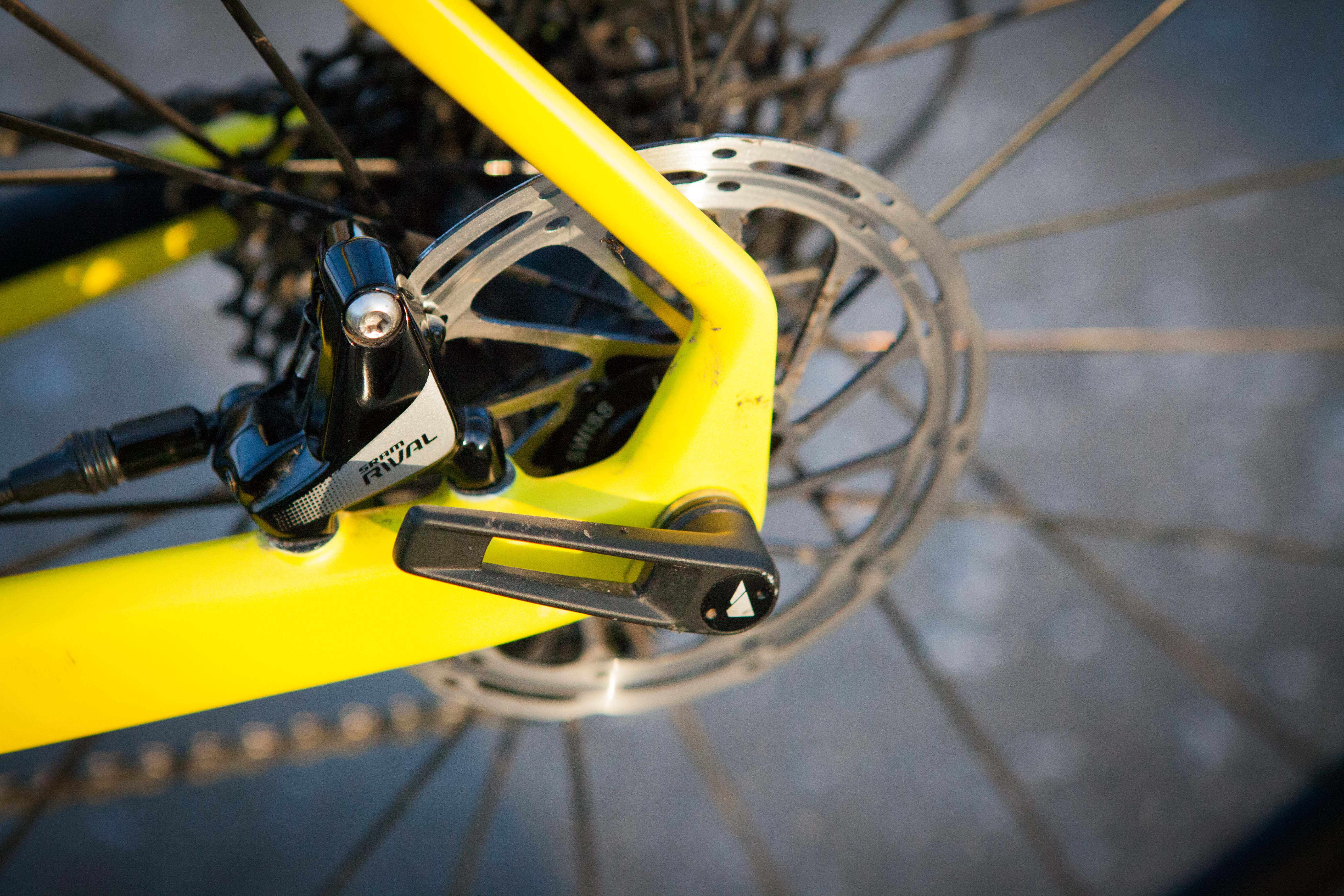
The forks have a squat, beefy appearance to them, and again come with plenty of clearance. Both frame and fork feature some of the tidiest internal routing we’ve seen. It might be an added frustration when it comes to cable changes, but makes huge sense on a ‘cross bike. Exposed cables risk contamination, but even cable outers and hoses act as shelves for mud to collect. It’s amazing how much extra weight will build up over the course of a single race. Clean lines also help getting nice and shiny as quickly as possible as well; less toothbrush, more big sponge.
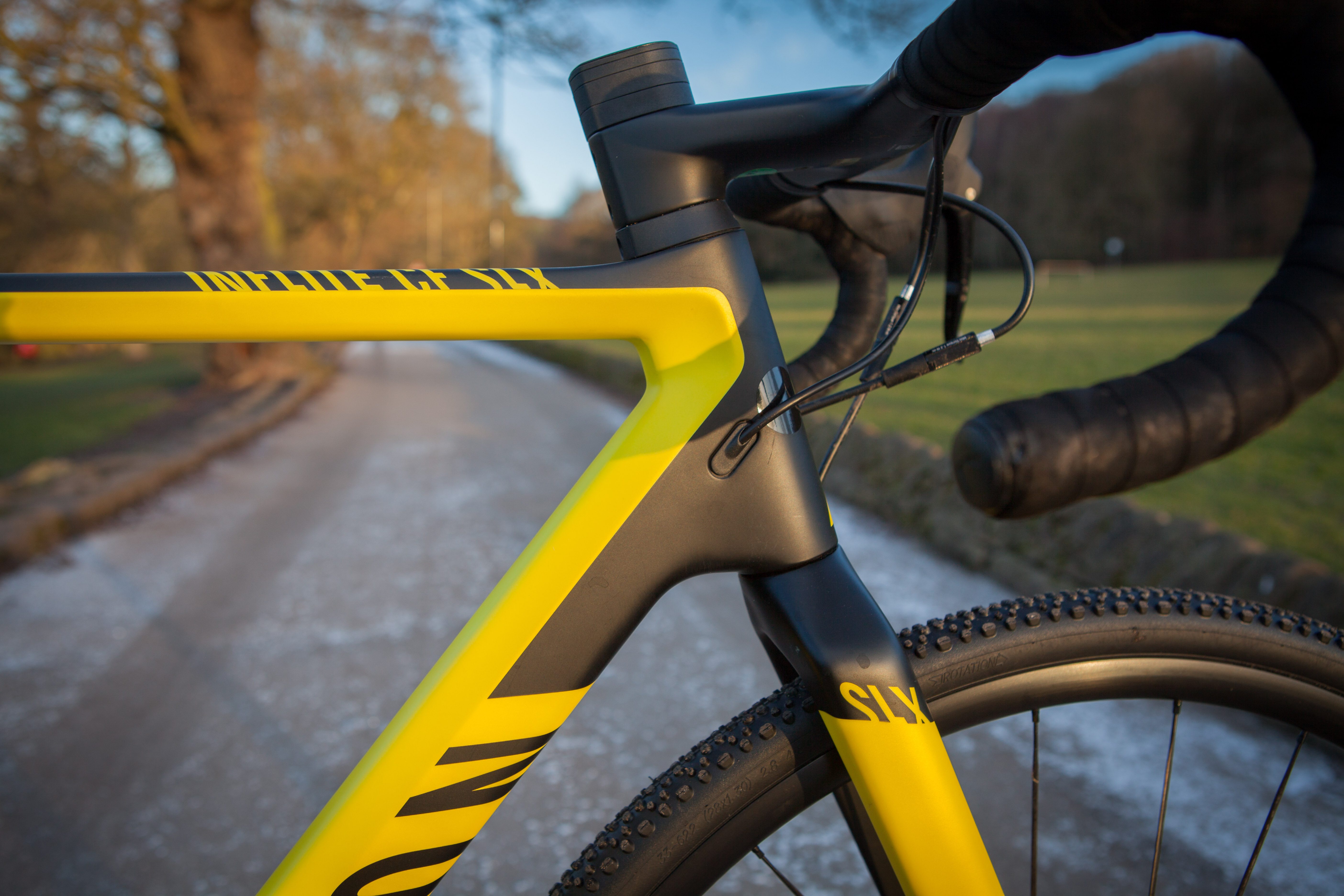
There’s a nod to practicality beyond the race course with double bottle mounts – a welcome addition for most.
Oh, and one final note on geometry. The Inflite is available in a whopping 8 sizes. The XXXS and XXS bikes come with 650b wheels, in keeping with the smaller overall proportions of the bike.
Specification
The Inflite CF SLX 8.0 Pro Race is the lowest specified in Canyon’s range (alloy versions are available for less). The groupset and brake combo is an entirely SRAM Rival 1 affair, with a subtle swap to a (SRAM owned) Quarq crankset, enabling a cheaper upgrade to a powermeter should you wish. I am a huge, huge fan of 1×11 for all off-road purposes, and I’ve got used to SRAM double-tap over the last few years. If you are coming from a 2x set up, and especially if you are used to Shimano, it might take a little while to adjust, but I find SRAM a little more intuitive, and prefer doing all my shifting with a single paddle, rather than using the actual brake lever for upshifts. The pronounced bulge of hydraulic reservoir at the top of the Rival brake levers makes for a good cradle for the hands and feels secure when bouncing down rougher terrain.
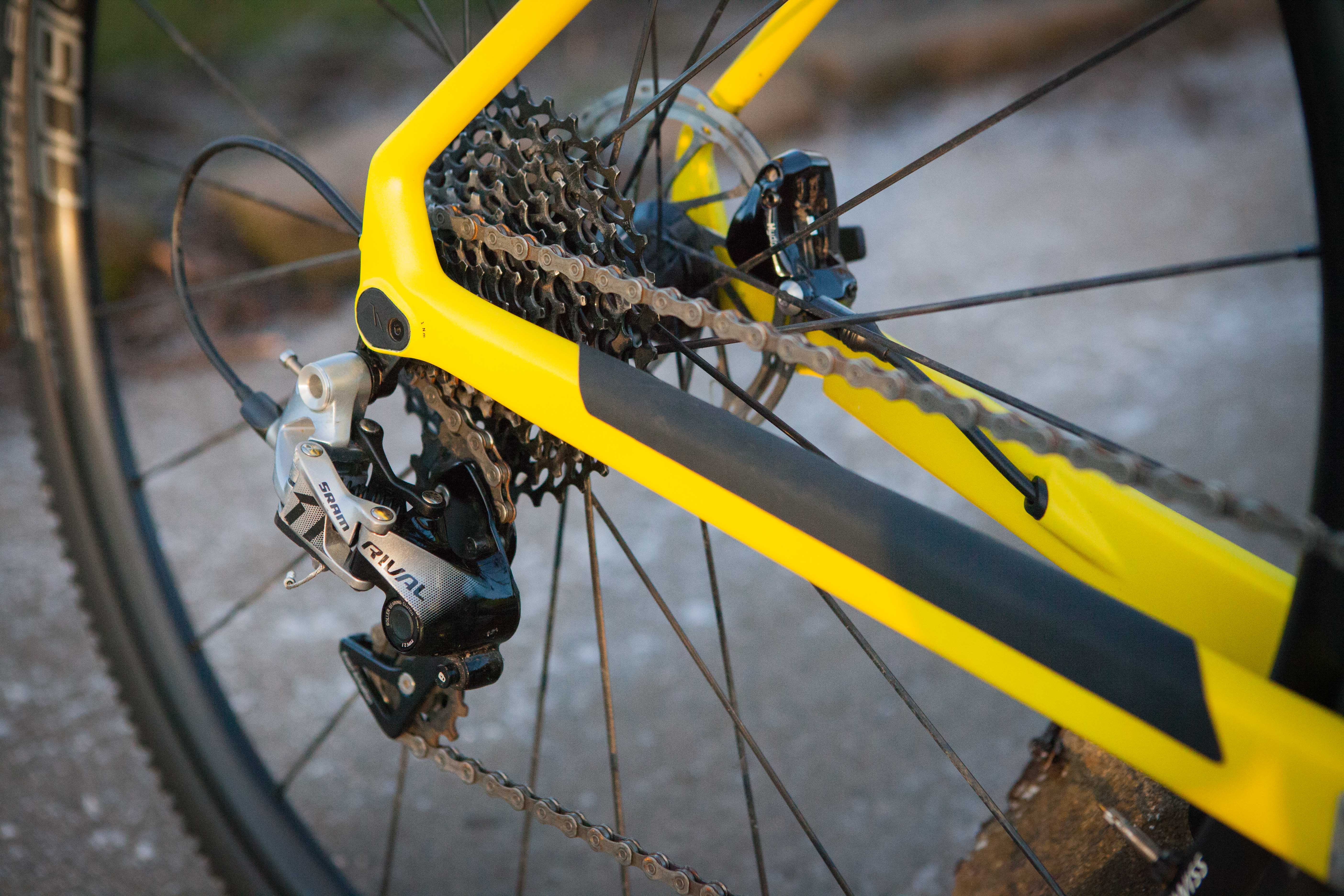
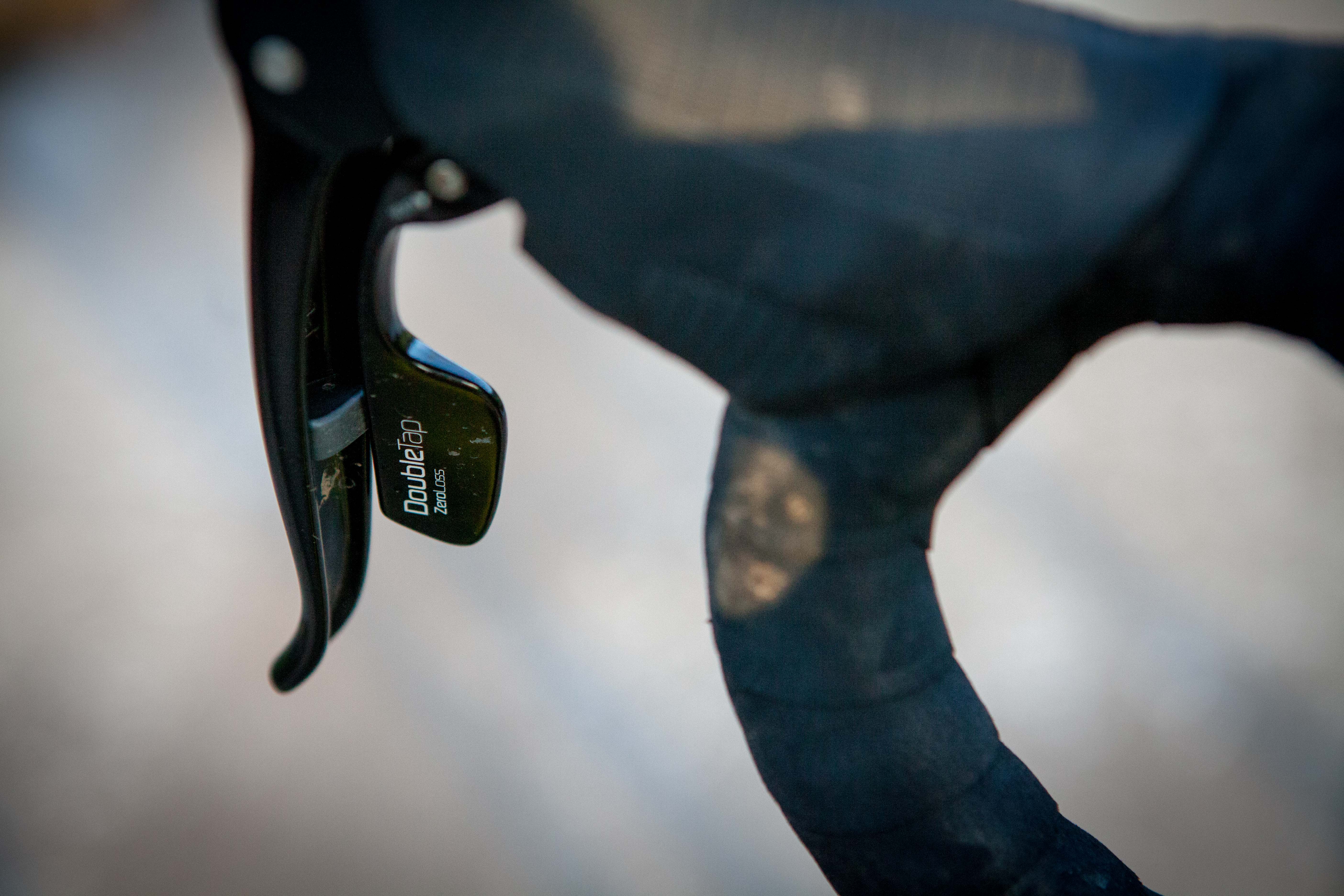
The 40t x 36/11t gearing offers a good broad range for ‘cross racing and general riding alike. Should you prefer a 2x set up, the next bike up in the Inflite range features Shimano Ultegra for an extra £400. The CF SLX 8.0 makes use of the front mech mount by running a Canyon-branded chain keeper. A nice touch, and I didn’t experience a single dropped chain during the test period, despite some challenging conditions.

The DT Swiss CR 1600 Spline DB are light if not shouty, and I reckon make for a great option. Those who are buying the CF SLX 8.0 Pro Race to take to the race course will more than likely want to run a race-day only wheelset (or sets). The DT Swiss wheels make for a good training and general riding option as well as a perfectly serviceable mid-level race wheelset. They are tubeless ready and I found them easy to swap tyres on with no more than a track pump.
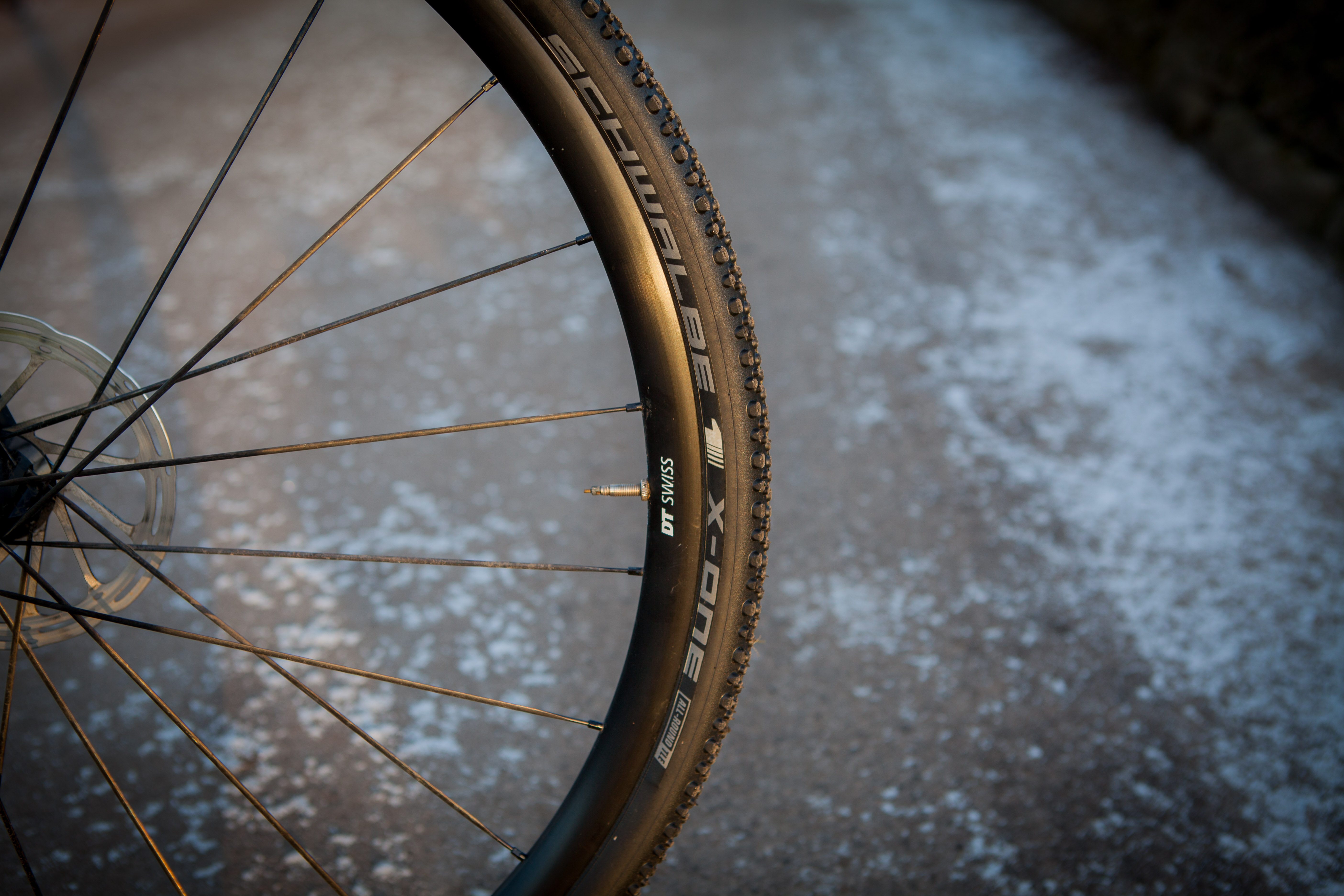
In fact, there’s some clever spec’ing in general going on from a privateer-racer perspective. Sure, SRAM Force would be nice, as would posher wheels, but over the course a whole race season, gears will wear out, bearings will get blasted. The whole package here seems to represent a good balance between value, durability and race-day performance. Perhaps the one oversight there is the Pressfit bottom bracket. We’ve had headaches with creaking Pressfit bottom brackets in the past which is a massive pain, but they are also a bit harder to maintain for the typical home mechanic than a good old external BB.
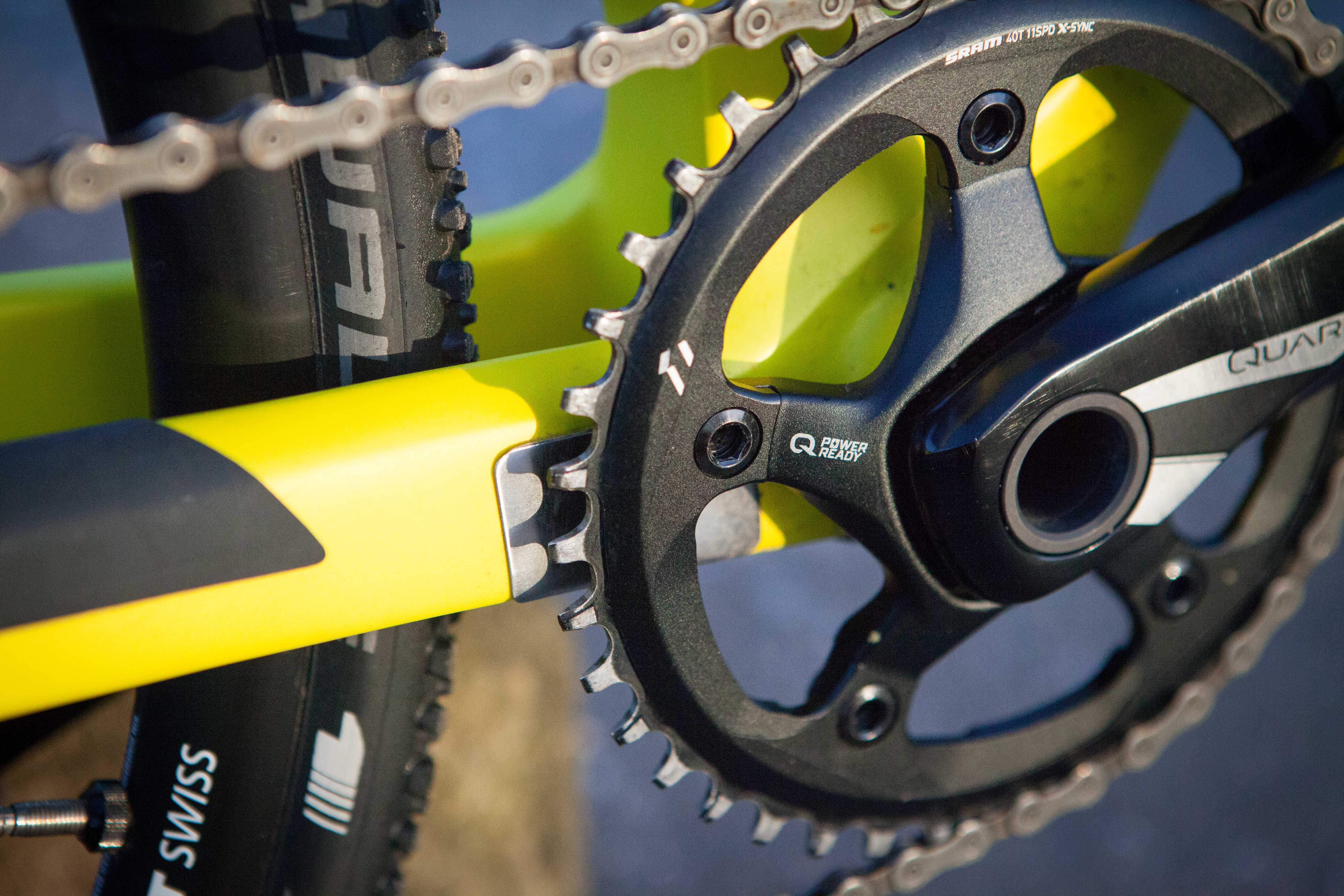

Finishing kit is almost all Canyon in-house technology. Most eye-catching is the all-in-one stem/handlebar. The carbon fibre H31 Ergocockpit has a wide, flattened central section to improve aerodynamics (not such an issue at the speeds I typically carry around a ‘cross course) and comfort. It is slightly swept back and the drops have a very subtle flare. As mentioned above, the stem length on our medium was 90mm and the width was 42cm. I’m 6ft tall and found this just about perfect, although I would have possibly preferred an extra 10mm or so stem length and have grown used to wider bars.

Buying from the internet – a wee digression
Canyon are an online only brand. You cannot walk into a bricks and mortar store and buy it. This keeps down overheads and the big benefit to the consumer of this approach is price. We are testing similarly spec’d bikes from other manufacturers at the moment and they cost around £500 more on average.
The biggest immediate downside to this approach is you can’t try out a couple of sizes, swap stem lengths, ask the advice of store staff before you part with what is still a large slice of cash. That beautiful one-piece Ergocockpit costs £362.95 if you want to buy a replacement. I reckon I am right in the middle of the medium/large threshold of sizing on the Inflite. If I were a home consumer, I’d have been left doing a good bit of head scratching, measuring current bikes and hovering over a few of the different options.
Luckily Canyon have thought this through. If, within 30 days of purchase, you decide the stock stem length isn’t quite right, you are able to request a change. This is sent with a free roll of new bartape. Customers can then decide which set up they prefer and return either cockpit. It’s also worth noting that the company also offer a 30 day return policy on complete bikes. The only requirement is that the bike must be in re-sellable condition. While many will still prefer to visit their local bike shop, it’s good to know that Canyon will help save you from making a costly mistake when buying from them.
The Ride
Right, where were we? So, the frameset promises much, the specification is sensible. Time to saddle up. Well, not quite. This being an internet bike, there’s a bit of construction needed before hitting the trails. Fortunately, Canyon make this as easy as possible, including a torque wrench with the bike to ensure there are no hamfisted home-mechanic moments.
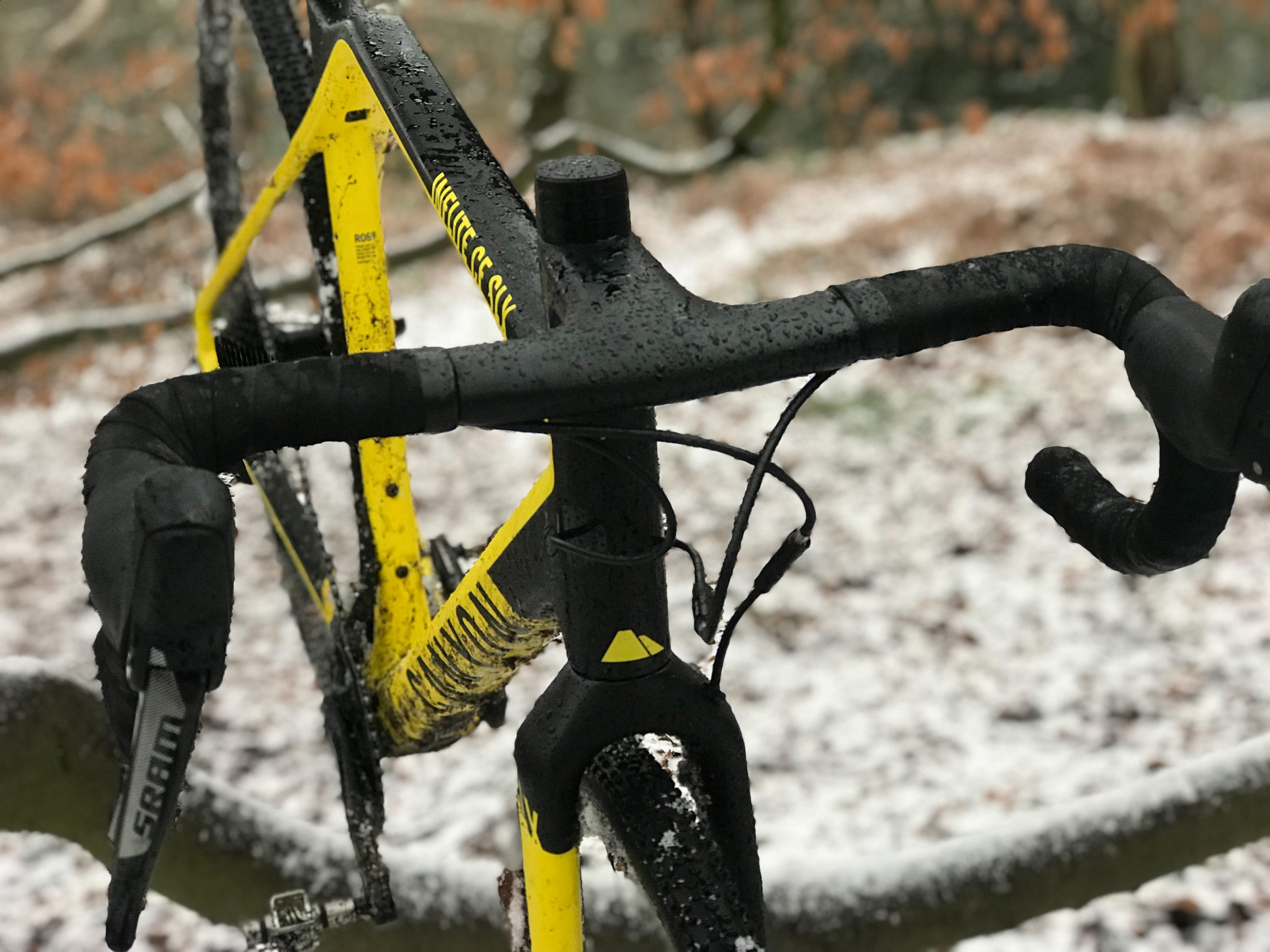
Now, lets ride. I climbed on board the Inflite after back-to-back testing of more “adventure” oriented bikes, with a higher front end and more relaxed geometry. The Inflite felt positively twitchy and nervous in comparison. After a short bit of getting to know you time, I quickly began to appreciate the Inflite’s handling. It felt direct, positive and confidence inspiring rather than nervy. Line choice could be made with precision and it was a joy to remember how tightly you carve a well designed ‘cross bike around corners. I’ve since spent a bit more time on a few other ‘cross bikes and the Inflite still stands out as a being a bit special.
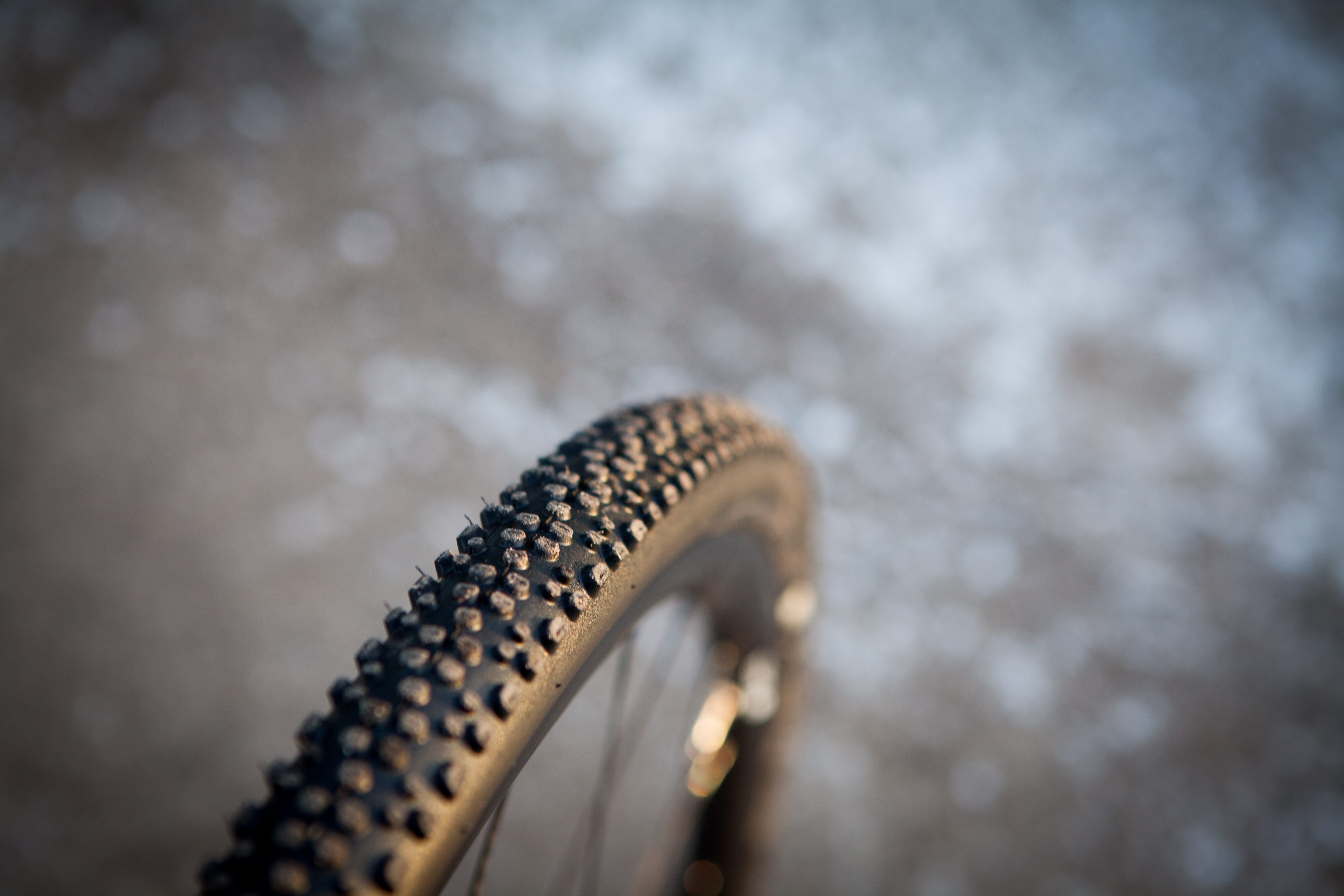
The nimbleness of the ride was accentuated by how spritely the bike felt under acceleration. It’s hard not to wander into every bike-test cliche going, but that stiff little rear end punched me forwards with each pedal stroke off the line. The Inflite feels stiff in a good way, but it is a genuinely comfortable bike to ride. Flex in the seat tube was noticeable and enabled me to stay seated over ground that I’d be out of the saddle for on other ‘cross bikes. While comfort is a bonus on a ‘cross bike, this has a real race benefit too. Seated power transfer means more weight over the back wheel, means a lower risk of spinning out.
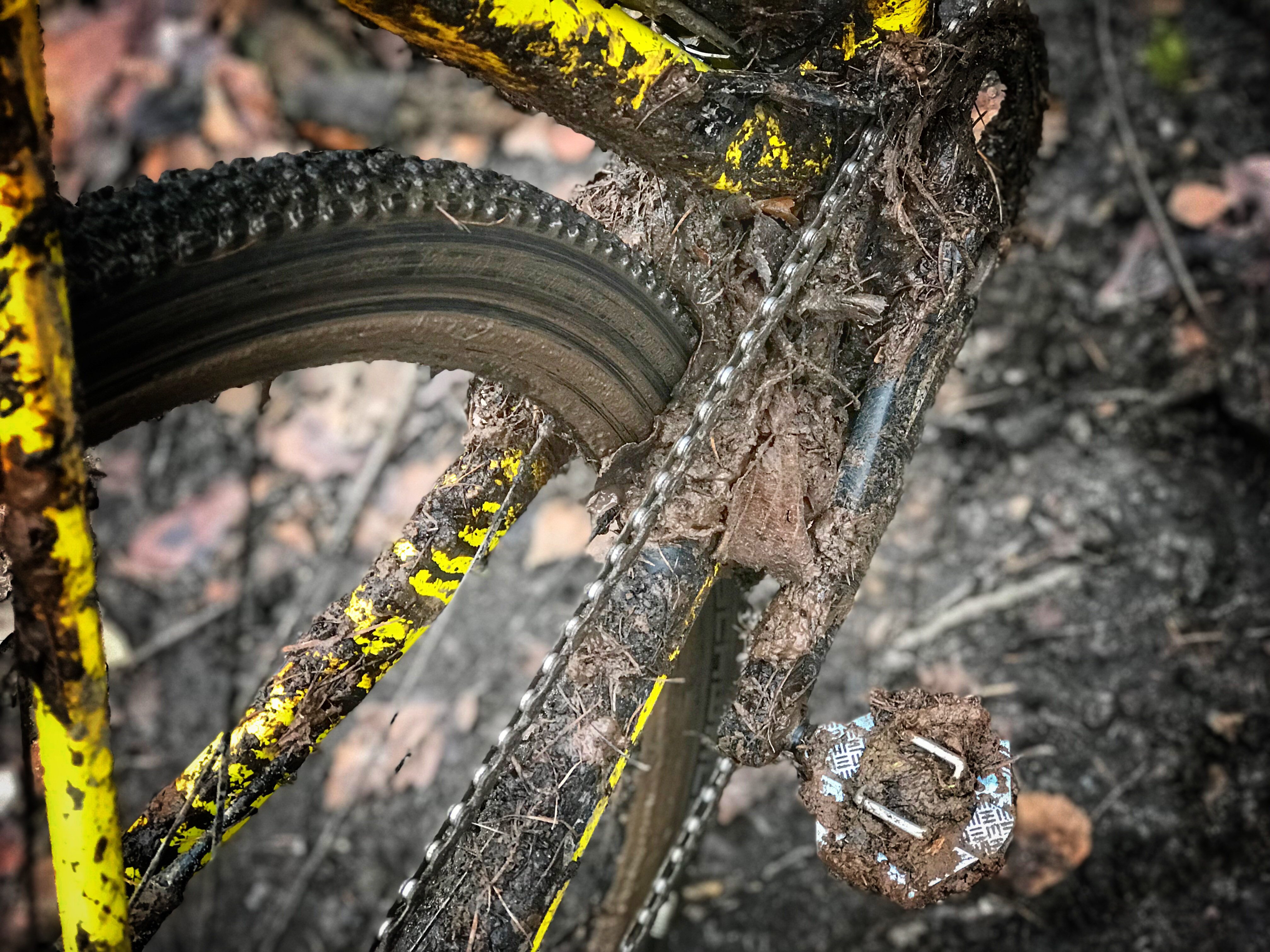
The low overall weight of the Inflite helps hugely. My scales confirmed Canyon’s claimed 8.2kg, and it would be easy to lose more with a higher end wheelset. Not only was there less bulk to shift while on the saddle, it took minimal effort to sling the Inflite over a shoulder. Whether the kinked top tube helped with this, I’m less convinced, but it certainly didn’t hinder things.

Everything that makes the Inflite a great race bike also made it a fun and engaging trail bike. It may not be its raison d’être, but I figure that even if I race a full ‘cross season, that’s maybe 10 hours of riding a year. 20 with summer series races thrown in too. I’ll spend many more hours “training”, or just going for a ride. There will always be a point at which 33c tyres and a racey geometry get a little overfaced, but I was impressed at what the Canyon dealt with in its stride. It was also remarkably comfortable over longer distances, happy to let me tick off several hours in the saddle without issue.
If gravel exploring and long trips are all that interests you, there are probably more suitable bikes out there, though, and there are no nods to practicality such as rack and guard mounts. This is not a criticism of the bike however, I’m really glad to see that there is very much room in the market for an out-and-out ‘cross race bike still.
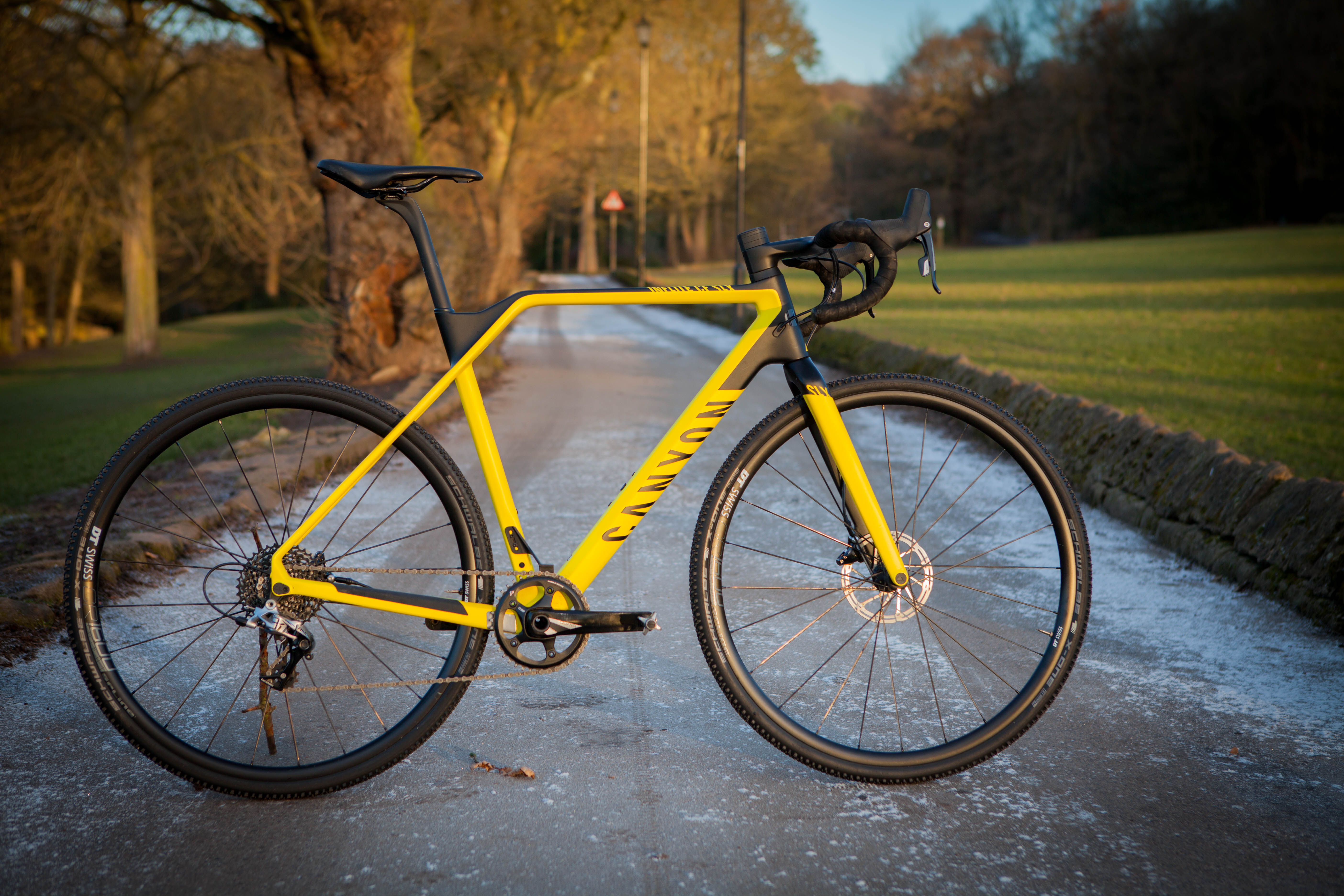
Downsides? There were very few. After a couple of post-race pressure washes and plenty of very grim conditions, the Acros headset bearings were feeling a little gritty when I returned the bike to Canyon. Likewise, it was a bit of shame to see the seat bolt cover abandon ship quite so easily.
Three things we liked:
- A no-nonsence evolution of the ‘cross race bike
- Comfort and handling
- Perfect balance of performance and value components
Three things that could be improved:
- While we had no problems with the Pressfit BB, we’d still prefer an external bearing
- A more secure bolt cover for the seat post
- Those looks are pretty challenging, but won us over a little by the end of the test
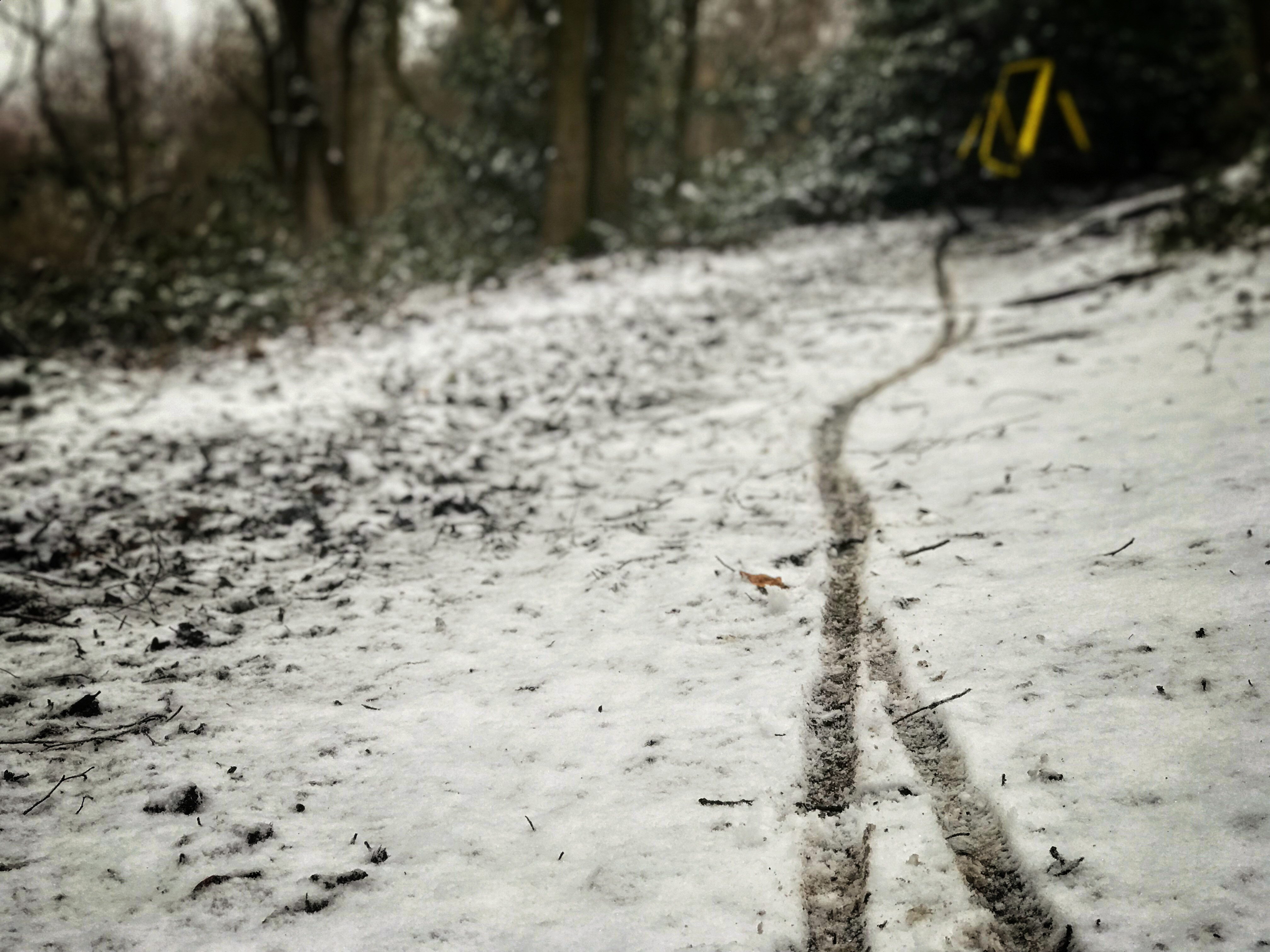
Overall
I find it hard writing good reviews. Am I being over generous? Am I missing something? Will readers just think “well he would say that, wouldn’t he”? It’s been a long time since I’ve ridden a bike that was such a complete package as the Canyon. At £2499, it is remarkably good value too. Want a ‘cross race bike that will be as fun off the course as between the tapes? It’s hard to look any further than the Inflite CF SLX 8.0. Recommended.





